hr fernsehen, 12.00 p.m.
When people think of "Hessian cuisine", the first things that come to mind are apple wine, green sauce and Handkäs' with music. But today's Hessian cuisine has much more to offer: Delicious meat dishes with apple wine, homemade herb soda or sheep's cheese made in Hesse. In this country, people traditionally like it rather hearty, yet increasingly refined. More and more influences and wines from all over the world, exotic ingredients and new flavour combinations are influencing Hessen's taste - from the Odenwald to Kassel. The new Hessian Kitchen ABC offers delicious gourmet delicacies and drinks from A to Z. It's not just the Hessians who will find their mouths watering.
SWR Television, 3.30 p.m.
Castle and palace owners in Baden-Württemberg open the doors to their salons. The days when they could liven up their palaces and castles with lots of staff and large parties are a thing of the past. How do the owners manage to keep their houses alive? Count Felix Adelmann can afford the luxury of Schaubeck Castle near Ludwigsburg with its flourishing winery.
Bavarian Television, 2.15 p.m.
Presenter Alexandra Zielinski and her guide Thomas Teubert set off from the Schloss Wackerbarth vineyard through the wintry vineyards. A mulled wine as a warming prelude, with or without percentages - no problem at the Schloss Wackerbarth adventure winery. From there, presenter Alexandra Zielinski and her companion Thomas Teubert set off through the wintry vineyards. The man from Radebeul is a winegrower himself and knows his way around Saxon wines. Alexandra Zielinski and Thomas Teubert make do with a fraction of the 100-kilometre Saxon Wine Trail.
arte, 5.40 p.m.
If you travel to Uruguay, you will be surprised by endless expanses and untouched nature. It is the smallest Spanish-speaking country in South America. Its inhabitants call it "Paisito". The documentary discovers one of the oldest wineries in the country.
SWR Television, 5.15 a.m.
Saint-Emilion still maintains the tradition of the Jurade, a relic from the time when the world-famous wine town still belonged to the Kingdom of England.
ANIXE, 7.45 pm
The journey begins there at the place where, according to legend, the Greek goddess of beauty Aphrodite is said to have risen from the sea. Cities like Paphos, Larnaca and Limassol impress with their old historical quarters and cosy tavernas. During his trip, actor Falk-Willy Wild can see for himself that the Cypriot wines are of quite outstanding quality. No wonder, because wine has been cultivated on Cyprus for thousands of years. An art that is also cultivated in the island's monasteries.
arte, 8.00 a.m.
The Benedictine monastery of Göttweig in Lower Austria is famous for its library with a hundred thousand writings and 32,000 engravings, including works by Dürer and Michelangelo. The predominantly young monks live from winegrowing and tourism.
SWR Television, 8.15 p.m.
The southwest of Germany is not only a stronghold for thinkers and inventors - in Baden-Württemberg and Rhineland-Palatinate there are also a lot of curious records. Higher, bigger, faster, heavier or crazier - there is hardly a record that has not been achieved here. The biggest tree, the smallest registry office, the steepest vineyard...
arte, 7.15 a.m.
Champagne is still considered an absolute luxury drink today. Kings and nobility made the sparkling wine famous in the 18th century. Yet monks discovered bubbles in wine more by chance than anything else. Fermentation in the wine barrels had stopped in winter, the second fermentation in spring brought carbonic acid and thus also the bubbles into the wine: the beginning of a success story. In Champagne, presenters Dörthe Eickelberg and Pierre Girard help with the grape harvest. They learn how the winegrowers determine the perfect time for the harvest. The grapes have to be handled as gently as possible, which is why the grapes are only harvested by hand in Champagne. To give the wine its perfect little bubbles, it is shaken for three weeks after the yeast has fermented into alcohol and carbon dioxide. Only then does the remaining yeast settle on the neck of the bottle and can be removed. Pierre and Dörthe are allowed to try out this shaking method themselves, according to an old tradition. Not only harvesting and production, but also opening and serving the champagne are a science in themselves. ARTE shows in which glass the aromas develop optimally and why it is better not to pop the cork. Scientists are also looking into the future of champagne. Climate change is changing the conditions under which the grapes are grown. What happens to the grapes when heat waves and dry periods increase? Will there still be Champagne from Champagne in the future?
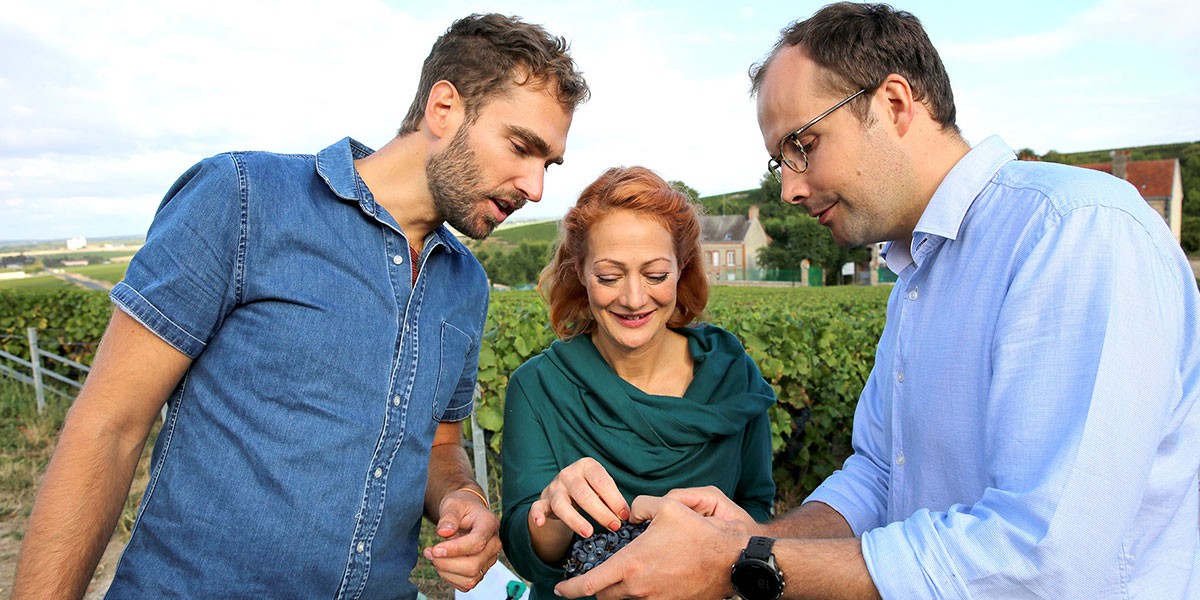 |
arte, 9.30 a.m.
Crémant is on the rise. Like the noble champagne, this sparkling wine is also produced according to the "champagne process". The traditional bottle fermentation produces some spectacular drops, and as "Crémant brut" they are certainly comparable to a real champagne. Alsatian Crémant is particularly popular because the region near the Rhine on the border with Germany has particularly diverse and fertile soils. "360° Geo Reportage" traces the noble Crémant in various Alsatian wine-growing regions. France is the land of wines. For centuries, wine-growing here has produced noble grapes, noble drops and - in the case of champagne - noble bubbles. But champagne has had serious competition for some time: French crémant. Almost 80 million bottles of it are produced every year. Alsace in particular is producing ever better sparkling wines. As long as noble grape varieties are used, many crémants from Alsace can compete with champagnes in terms of taste. High-quality cultivation and processing methods as well as the noble soils of Alsace produce many a top crémant.
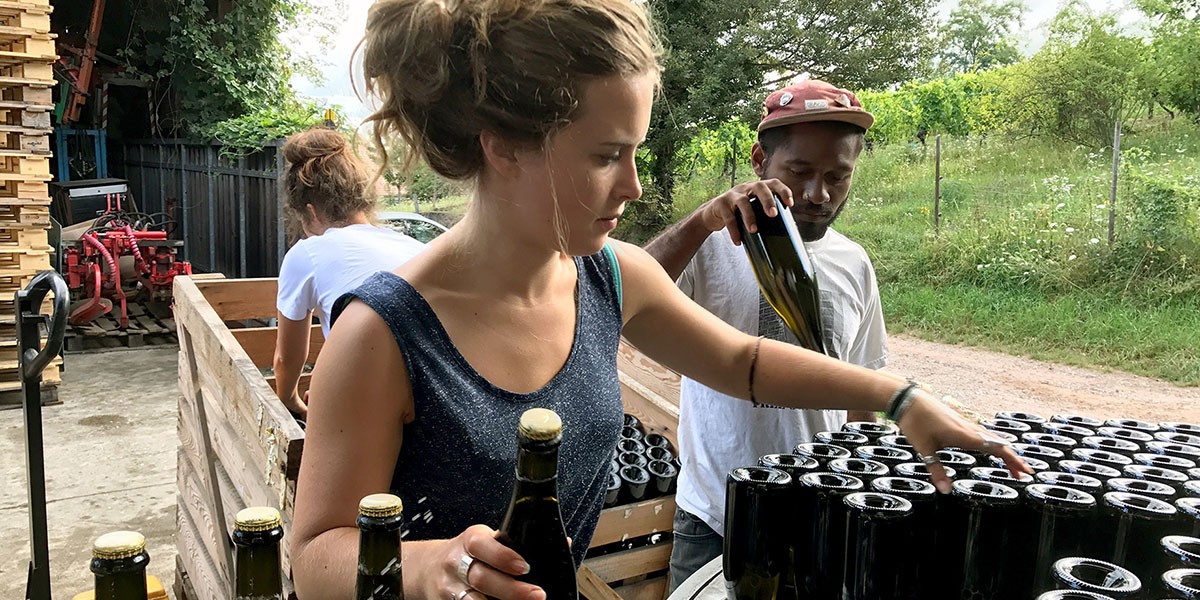 |
One of the best sommeliers in the world - Serge Dubs - also knows this. The master of his trade has been assessing wines, champagnes and crémants for decades. He knows the methods and peculiarities of the winegrowers like no other. Already during the growth phase, long before the duck, the future wine qualities can be fathomed. Depending on the grape variety used, crémant in Alsace is usually white, rarely also offered as rosé. Crémant from Alsace is gaining more and more enthusiasts, even if the great price advantage is history. In the meantime, the price for a bottle of Alsatian Crémant quickly reaches 20 to 30 euros. If the grapes for the Crémant came from Champagne instead of Alsace, and if the pressure on the bottles was 6 bar instead of the usual 3.5 bar, then you would have a real champagne in front of you. The winegrowers and gourmets in Alsace know why they defend their high-quality crémant and look forward to the latest vintage every time.
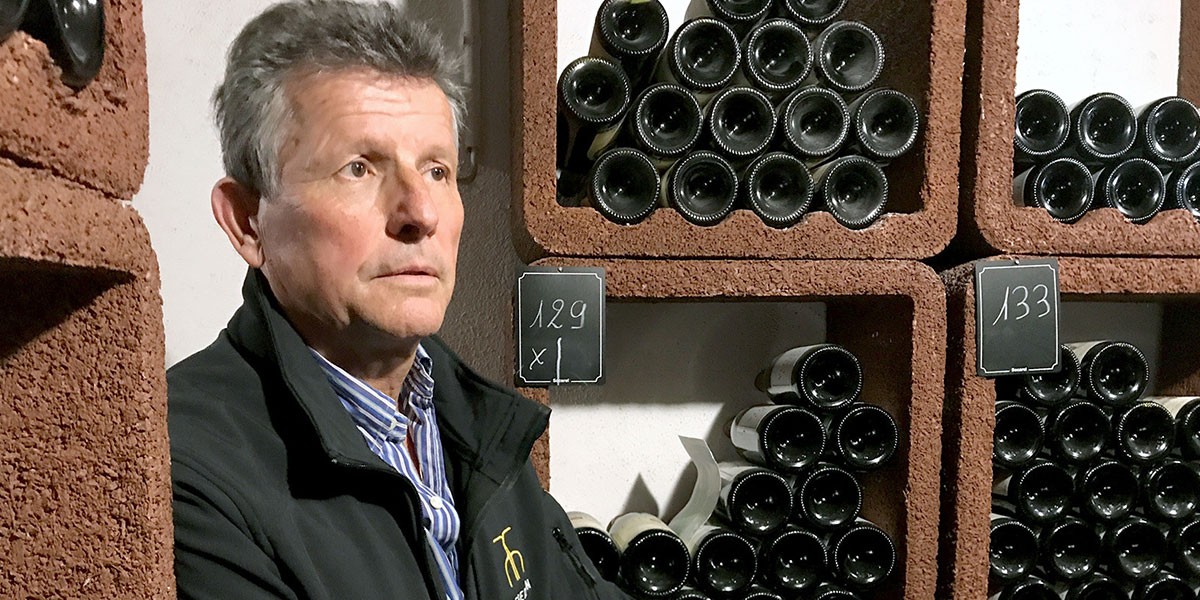 |
hr-fernsehen, 12.20 p.m.
Georg Plattner has made sure that Thomas is not represented at the wine festival in Rust. Thomas launches a counterattack with his own wine tasting and raffle. The main prize is a sightseeing flight, but Georg tries to make the plane unable to take off. When Georg wins the flight, he climbs into the plane in fear of his life, not knowing that the plane has been repaired in the meantime. In Rust, the big wine festival is just around the corner. Georg Plattner, the head of the winegrowers' cooperative, has organised it and, as if by chance, has overlooked Thomas Stickler.
3sat, 3 .00 p.m.
The "Romans on the Rhine" not only left behind countless buildings, their traces can also be found in the kitchen. They grew wine along the Moselle, Rhine and Nahe rivers, which was even exported to Rome, and provided fresh vegetables in the form of rocket and goutweed.
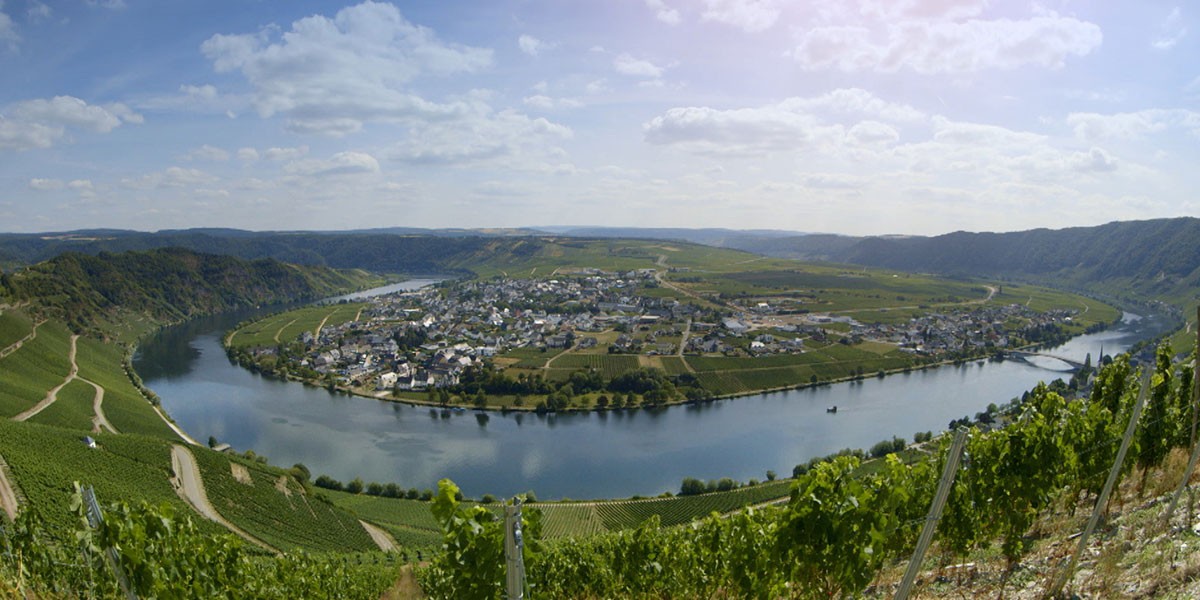 |
hr-fernsehen, 2.45 p.m.
The most beautiful excursion tips in the Rheingau region with its vineyards, churches and monasteries, all offered on an adventure tour along the Main and Rhine rivers. After Hochheim with its vineyards and award-winning winegrowers and the famous Queen Victoria Monument, the Main flows into the Rhine opposite Mainz. Then it's through the wine-blessed Rheingau region with its time-honoured monasteries of Eberbach and St. Hildegard via Lorch to the state border in Lorchhausen.
hr-fernsehen, 11.05 a.m.
More than a third of Frankfurt's urban area is "green": the Frankfurt "green belt". That's about 7,700 hectares, and even about half of that is forest. Achim Rupp, winemaker from Frankfurt's Lohrberg, is responsible for the northernmost wine-growing region of the Rheingau: Frankfurt's Lohrberg vineyard. A noble Riesling is bottled here.
3sat, 2.05 p.m.
In Luxembourg, the Moselle shows its delightful and exotic side: a visit to a vineyard is on the agenda. Favoured by the exceptionally mild climate, Moselle Rieslings are now considered by connoisseurs to be among the best wines in the world.
3sat, 2.50 p.m.
The Moselle, which is less straightened than any other German river, meanders in loops through classic landscapes of longing. From Trier to the former Art Nouveau Mecca of Traben-Trarbach and from there to the best young winegrowers in their field.
3sat, 4.20 p.m.
The canalisation of the Saar in the 19th and 20th centuries has changed the landscape, and some of the deepest locks in Germany can now be found in its lower reaches. This is also the home of winemaker Christian Ebert. Industrial use and ecological viticulture may seem like a contradiction in many places, but not so on the Saar. Even steep slope expert Ebert has nothing against the cargo ships chugging along in front of his vineyards, on the contrary: the development into a major shipping route ensures an evenly wide expanse of water. This moderates the temperatures in winter. Less susceptible to frost and with a more pleasant acidity of their wines, the canalisation of the Saar has been a blessing for the winegrowers here.
3sat, 5.00 p.m.
The oldest wine harvesting crew still clambering around steep vineyards in the middle of the pulsating capital of Swabia at well over sixty years of age is in Stuttgart.
3sat, 5.45 p.m.
The Main is the only river in Europe that flows in all four directions. The film takes the Main from the source of the Weißmain and the Rotmain down to where it flows into the Rhine. The film introduces a real princess who, after a heavy blow of fate, has taken over the family business on the steepest vineyard of the Main.
ORF III, 6.20 p.m.
The "wine with the pepper" - the Grüner Veltliner of the Austrian Weinviertel. Formerly hidden as sorrel in almost opaque dopplers (two-litre bottles) - today successfully marketed worldwide as the "wine with the pepper note" and written in the upper price segment on drinks menus between Hollywood, New York or Shanghai. Grüner Veltliner as a new ambassador of Austrian culinary culture? With the DAC rating, the Weinviertel has found its taste. The film by Alexander and Nadeschda Schukoff sets out on a culinary-historical search for the origins of the unmistakable peppery-spicy taste of this Austrian wine.
 |
ANIXE, 7.45 p.m.
In an old bodega, a language student tastes Picasso's beloved sweet wine. The language school takes her to a wine tasting of 16 different varieties, including sweet liqueur wine. Anixe is also present when flamenco is sung and danced in a tapas bar.
3sat, 10.15 a.m.
Gerd Klein deliberately decided to take on the legacy of his ancestors. His family is already the seventh generation to run a vineyard on the Moselle. The fact that now, almost 200 years later, his son has also accepted the challenge fills the winemaker with great pride: "The long family tradition has always fascinated me and is also a kind of obligation to this day."
SWR Television, 6.15 p.m.
Café Känzele in Rottweil is a feel-good place, as is Weinhaus Stanis in Rottenburg. Here Klaus Biesinger pours his own good wine.
hr-fernsehen, 12.20 p.m.
Thomas Stickler invites his partner Claudia Plattner for a short holiday. He secretly plans to propose to Claudia during these days, far from all the hustle and bustle of everyday life. Where better to propose than in Venice? So the two of them set off there. But they don't get far.
arte, 12.45 p.m.
Delaware is known as a tax haven, but excellent wines also grow on its coast. Peggy Raley started with just a few vines and had yet to get wine growing legalised in the Puritan state. Today, her farm is known throughout the East Coast.
3sat, 3 .00 p.m.
The journey leads from the former royal city of Évora through the Alentejo hinterland with its unique cork oak forests, olive groves and vineyards, via Estremoz, Marvao and Monsaraz, which lies on Europe's largest reservoir, to the Atlantic coast and Vasco da Gama's birthplace Sines.
ZDFinfo, 10.00 a.m.
The longest life, the best air, the lowest rents or the highest income - which places in Germany are top and which are flop? A new study provides surprising answers. Winegrower Hildegard Stigler leads the kind of life that many people imagine. She regularly stands in her vineyards, prunes the vines and enjoys the landscape. Afterwards, she sits with the whole family at "Vesper", the evening meal. With a glass of wine from her own vineyard, of course. "It's a cosy life here," she says, "it lets us grow old. We don't have any stress." In fact, women in the Breisgau-Hochschwarzwald region have the highest life expectancy in Germany.
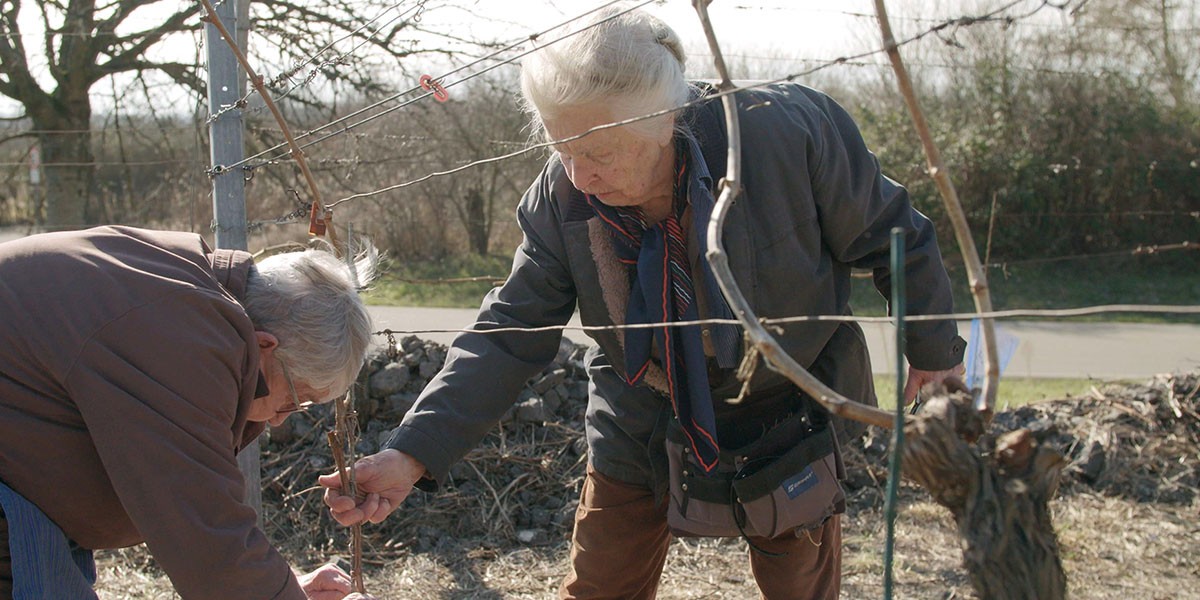 |
Das Erste (ARD), 1.15 p.m.
ARD Degeto DAS TRAUMHOTEL - STERNE ÜBER THAILAND, on Sunday (06.01.19) at 13:15 on ERSTEN. Leonie (Miriam Morgenstern) and her boyfriend Niko (Andreas Tobias) are in a hurry, they have to get the urgently needed champagne for the beach party. © ARD Degeto/Lisa Film/Thomas Ruddies/Andre Fichte
3sat, 2.45 p.m.
"Isola verde", green island, is what the Italians call the fertile volcanic island of Ischia. In ancient times, it was the first colony from which the Greeks conquered the Italian mainland. Shortly afterwards they founded Rome - it is said that culture came to Italy via Ischia: art, knowledge, philosophy and wine.
rbb Television, 2.45 p.m.
This is where newcomers, old-timers and tourists come together - the Späti is part of the Berlin city feeling. And it is as colourful as the Spätis: it ranges from the corner shop that has been around for 15 years to the newly opened hipster Späti. But they all have one thing in common: they are looking for ways to assert themselves in a rapidly changing city. While the old-established one relies on its regular customers and only makes small adjustments, the new Späti on Hermannstraße has an unusual concept: it organises wine tastings and lectures in the rented garden. The rbb reporters accompany three different Spätkaufs in their everyday life, which could hardly be more different.
SWR Television, 6.15 p.m.
It is the largest settlement of Chinese companies in Europe. And it is not in Frankfurt, London or Madrid, but in Hoppstädten-Weiersbach, a town of 3,000 inhabitants in the Birkenfeld district, one of the structurally weakest regions in the southwest. The Oak Garden, a business centre founded by a German and a Chinese woman, has been "flourishing" here since 2011 on the site of a former American military facility. They have confidently christened it the "headquarters of the world factory". And their success seems to prove them right: Hundreds of Chinese already live here. And the number is growing every month. Every fifth inhabitant in the village now comes from the Far East. For them, Hunsrück is in the middle of Europe. An ideal place to do business, they believe. It is mainly small family businesses that have settled here and want to export Mosel wine to China, for example. In Hunsrück, the Chinese are welcomed with open arms: They are expected to help the region grow economically again. Chinese and Hunsrückers alike are pinning their hopes on the Oak Garden. And rightly so?
arte, 7.15 a.m.
Crémant is on the rise. Like the noble champagne, this sparkling wine is also produced according to the "champagne process". The traditional bottle fermentation produces some spectacular drops, and as "Crémant brut" they are certainly comparable to a real champagne. Alsatian Crémant is particularly popular because the region near the Rhine on the border with Germany has particularly diverse and fertile soils. "360° Geo Reportage" traces the noble Crémant in various Alsatian wine-growing regions. France is the land of wines. For centuries, winegrowing here has produced noble grapes, noble drops and - in the case of champagne - noble bubbles. But champagne has had serious competition for some time: French crémant. Almost 80 million bottles of it are produced every year. Alsace in particular is producing ever better sparkling wines. As long as noble grape varieties are used, many crémants from Alsace can compete with champagnes in terms of taste. High-quality cultivation and processing methods as well as the noble soils of Alsace produce many a top crémant. One of the best sommeliers in the world - Serge Dubs - knows this. The master of his trade has been assessing wines, champagnes and crémants for decades. He knows the methods and peculiarities of the winegrowers like no other. Already during the growth phase, long before the duck, the future wine qualities can be fathomed. Depending on the grape variety used, crémant in Alsace is usually white, rarely also offered as rosé. Crémant from Alsace is gaining more and more enthusiasts, even if the great price advantage is history. In the meantime, the price for a bottle of Alsatian Crémant quickly reaches 20 to 30 euros. If the grapes for the crémant came from Champagne instead of Alsace, and if the pressure on the bottles was 6 bar instead of the usual 3.5 bar, then you would have a real champagne in front of you. The winegrowers and gourmets in Alsace know why they defend their high-quality crémant and look forward to the latest vintage every time.
Bavarian Television, 8.15 p.m.
In Franconia, people really do go down to the cellar to laugh, or more precisely: to the Staatlicher Hofkeller zu Würzburg under the Residenz. Here, between centuries-old wooden barrels, people celebrate, laugh and, of course, taste wine - something you can only do at the "Närrische Weinprobe". The host is Martin Rassau from the Comödie Fürth. He will be flanked by former wine queen Nicole Then and the candidates for queen in 2019. Well-known artists from the Franconian carnival scene such as Michl Müller, Doris Paul and Bernhard Ottinger will be there. But the "Närrische Weinprobe" also offers young and new artists a chance to prove themselves on the TV stage.
ZDFneo, 7.10 a.m.
We live in a country whose contrasts in a small space are astonishing: from the wine harvest on the bizarre terraces of the extinct volcano Kaiserstuhl deep in southern Baden to the world's largest heavy metal festival on the pastures of the Schleswig-Holstein cow village of Wacken.
hr-fernsehen, 12.25 p.m.
Thomas is delighted to tell his fiancée Claudia about the house building plans he has been working on with the architect behind her back. Claudia feels left out. Thomas promises to include her in all deliberations from now on and is able to rectify the situation. Their love lives and Thomas immortalises it with a sign on the old tree above the vineyards.
hr-fernsehen, 1.10 p.m.
Since the death of her husband, winemaker Franziska Habicht has been taking care of the continuity of her traditional family winery on her own. Thanks to her commitment, business is going well. This is not the case with her neighbour, the big winegrower Josef Fink: he produces cheap wines and has to increase his acreage to get his money's worth. He would love to buy Franziska's vineyard, but to no avail - until fate hands him an ancient contract showing that the Habichts' vineyard had already passed into the Finks' possession in 1602. Naturally, Franziska leaves no stone unturned to challenge the document.
3sat, 3.55 p.m.
The film shows the most beautiful places and landscapes in France: It takes us to Alsace, the region around the metropolis of Bordeaux and the mountains of Savoy. Alsace is not only synonymous with pure culinary delights, but also with the idyllic half-timbered houses and cozy boat trips on quiet rivers. Of course, a visit to Strasbourg, the seat of the European Parliament and a metropolis steeped in history, is also part of the programme. Bordeaux at the south-western end of the country, the capital of Aquitaine, Hessen's partner region, is also full of stories and history. Its name is inseparably linked with famous and noble wines.
hr-fernsehen, 4.00 p.m.
A trip to our neighbours in Rheinhessen is well worth it. It is only a Katzensprung across the Rhine by ferry. There you will pass through gently rolling vineyards with views of many windmills and many small towns ending in "-heim". In each of them there is more than one winery. In Germany's largest wine-growing region, you can find the right wine for every taste. Nina Thomas visits some of the many dedicated winegrowers in their vineyards. Of course, there is food to go with the wonderful wine - from a hearty Winzervesper to pike-perch with black pudding to rack of lamb and chocolate dessert.
ANIXE, 7.45 p.m.
Rothenburg ob der Tauber is one of the most beautiful and popular destinations for foreign tourists in Germany. The region, once the largest wine-growing area in Germany, offers a variety of surprises for gourmets and explorers. First-class regional cuisine is accompanied by wines from the region.
WDR Television, 8.15 p.m.
September is the month of the grape harvest and perfect for tasting the delicious local drops.
ANIXE, 7.45 pm
The wine region of the Valle San Antonio
hr-fernsehen, 8.15 pm
A "bio-village" is to be gradually developed in Braunfels-Neukirchen, with car sharing, a village vineyard and alternative forms of housing.
Bavarian Television, 3.30 p.m.
The life of Barbara and her family is determined by wine. The woman from Lower Franconia in the district of Schweinfurt trained as a nursery school teacher, but when she met winemaker Manfred, it was soon clear to her that she would change her career. The Baumanns have eleven different wines in their portfolio. Their son Felix is studying viticulture and will take over the farm one day.
MDR Television, 8.50 a.m.
Unrest arises among the winegrowers of Retz because of an EU agricultural inspection. The farmers fear that their false statements about the size of the cultivated areas will be discovered and decide to effectively bribe the supposed EU agricultural inspector Ruud van Leuwen.
arte, 7.20 a.m.
Crémant is on the rise. Like the noble champagne, this sparkling wine is also produced according to the "champagne process". The traditional bottle fermentation produces some spectacular drops, and as "Crémant brut" they are certainly comparable to a real champagne. Alsatian Crémant is particularly popular because the region near the Rhine on the border with Germany has particularly diverse and fertile soils. "360° Geo Reportage" traces the noble Crémant in various Alsatian wine-growing regions. France is the land of wines. For centuries, winegrowing here has produced noble grapes, noble drops and - in the case of champagne - noble bubbles. But champagne has had serious competition for some time: French crémant. Almost 80 million bottles of it are produced every year. Alsace in particular is producing ever better sparkling wines. As long as noble grape varieties are used, many crémants from Alsace can compete with champagnes in terms of taste. High-quality cultivation and processing methods as well as the noble soils of Alsace produce many a top crémant. One of the best sommeliers in the world - Serge Dubs - knows this. The master of his trade has been assessing wines, champagnes and crémants for decades. He knows the methods and peculiarities of the winegrowers like no other. Already during the growth phase, long before the duck, the future wine qualities can be fathomed. Depending on the grape variety used, crémant in Alsace is usually white, rarely also offered as rosé. Crémant from Alsace is gaining more and more enthusiasts, even if the great price advantage is history. In the meantime, the price for a bottle of Alsatian Crémant quickly reaches 20 to 30 euros. If the grapes for the Crémant came from Champagne instead of Alsace, and if the pressure on the bottles was 6 bar instead of the usual 3.5 bar, then you would have a real champagne in front of you. The winegrowers and gourmets in Alsace know why they defend their high-quality crémant and look forward to the latest vintage every time.
hr-fernsehen, 12.25 p.m.
After a terrible accident, Paul and his mother Claudia find themselves in hospital. While Paul's recovery progresses quickly, Claudia is in a coma. Thomas suspects the attending doctor of inadequate treatment. His sister Andrea takes great care of Thomas and calls in a brain specialist.
Das Erste (ARD), 1.30 p.m.
When the attractive Hamburg landscape architect Ulrike Bongart inherits a vineyard near Barcelona, she meets and falls in love with the charming Pablo Braso. After she is fired by her jealous boss, Ulrike decides to start a new life on her winery - together with Pablo. What Ulrike does not suspect: Pablo is the son of an unscrupulous businessman who has his sights set on her property. To achieve this goal, almost any means will do. "Inherited Happiness" is a romantic drama about love, trust and family. It stars Jennifer Nitsch and Francis Fulton-Smith.
WELT, 7.10 p.m.
Fine champagne from France, full-bodied red wine from Italy or strong Rioja from Spain. But German quality wines are nowhere to be found? Not at all! Nowadays, top drops of the finest grapes also come from German wineries and sparkling wine cellars that have won awards all over the world. The report meets top winemakers in their breathtaking vineyards, presents an East German sparkling wine success story and shows who is way ahead in this country when it comes to soils, vines and grapes.
SWR Television, 8.15 p.m.
In impressive aerial shots, the film shows the uniqueness of the Neckar habitat: the rugged beauty of the upper course, where it seeks its winding bed between the Swabian Alb and the Black Forest, the middle course with its open valleys and vine-covered slopes, and finally the lower course, where its bed cuts deep into the Odenwald, the banks shaded by forests.
SWR Television, 5.50 a.m.
World-renowned wines. Wineries with famous names. The Rheingau shines when it comes to Riesling. 84 percent of its almost 3,200 hectares of vineyards are planted with this variety alone. The Rheingau is a wine cultural landscape of superlatives. It is home to the oldest Riesling domain in the world, the first site designation on a German label and other milestones of glorious wine tradition. In general, everything in the Rheingau is somehow more historic, bigger and more glamorous than elsewhere. But where it shines, there is usually also a bit of shadow: The wine region between Wicker on the Main and Lorchhausen on the Middle Rhine lacks the openness and dynamism of other growing regions with a less successful history. The time-honoured Rheingau is in a state of upheaval, has to reorient itself in a globalised wine world that is changing rapidly.
hr-fernsehen, 11.35 a.m.
When you think of Frankfurt tradition, the first thing that comes to mind is apple wine. It is served in pubs and in ambitious inns. But there are also other traditions: The Nibelungenschänke has been a fixture in the Nordend for over 35 years. The noble Greek cooks unchanged good food and has loyal regulars. In Sachsenhausen, an Austrian restaurant maintains the tradition of the Heuriger with typical dishes - served in dirndl.
SWR Television, 9.00 p.m.
In this episode Andrea R. comes on board. For thirty years she has suffered from rheumatism and the side effects of strong medication, the disease has made her an early pensioner. The 52-year-old is now completely surprised by Anne Fleck's strategy: "You have to eat a lot of fat!" Good fats, which are found in salmon, tuna, mackerel or high-quality oils. Plus dark chocolate, black and green tea and three glasses of red wine a week, all of which have an anti-inflammatory effect. Will Andrea R. get another chance after three difficult decades?
ARD-alpha, 10.00 a.m.
Autumn is a busy time in the vineyards: the grapes are harvested and delivered to the wine cellar. Wine technologists receive them, press the juice and turn it into wine.
MDR Television, 12.25 p.m.
Winding alleys, cosy wine taverns and historic walls form the romantic backdrop to old and new love stories.
Bavarian Television, 2.15 p.m.
Up we go through Naumburg's Blütengrund - below flows the Saale, above greet the autumn-coloured vineyards. Where the Saale swallows the Unstrut, the "Stone Picture Book" opens up, as does the Max Klinger vineyard. Cross the Unstrut to Kleinjena - behind the village a scenic treasure awaits: the "Toten Täler" and the "Rödel". Formerly used as a tank training area, it is now a nature reserve where a herd of wild horses helps to maintain the landscape. After the descent, Freyburg is soon reached. The educational wine trail inevitably leads past the baroque ducal vineyard and to Neuenburg Castle.